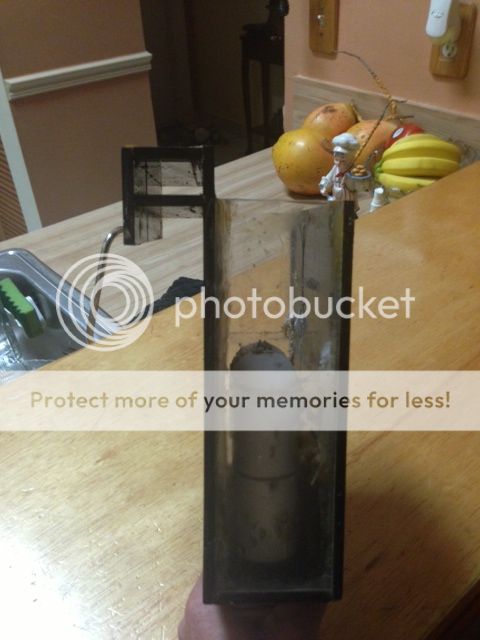You could always make a complete wood box without the top and just attach the box to the tank with a bulkhead with a gasket on both sides. This way, you are not depending on a sealant to adhere the wood to the glass tank and keep a complete seal at the same time. Just make sure the box is completely sealed with at least silicone.
Hi, Cymonous. Thanks for your response and insight. I think you suggest a
great idea. The "fourth wall" added, making a complete box, would add more structure and strength to the external overflow box. Ordinarily, doing this very thing with a
glass overflow box is much more difficult, given the difficulty of accurately aligning with the double-set of holes positioned in the back wall of the tank and the receiving "fourth wall" of the overflow box.
Yet your idea is very good because it is much easier to drill holes in wood than in glass, and if a slight misalignment occurs, then one could just chuck the wood panel and start again. As stated above, wood is so much more forgiving than glass.
But I am concerned: are you confident that the five (5) bulkheads are strong enough to support the weight of the entire 48"-long overflow box on the 75-gallon tank? The overflow box measures 48" long, 5" deep (front to back) and 8" tall. I'm having trouble trusting in that, but I am naive on the strength of bulkheads as hanging support structures. I also don't know what, if any, buckling pressure it would put on the webbing around the glass holes. Nor do I know whether the downward pull on the bulkheads caused by supporting the overflow box hanging on it, would cause warping, wracking, or movement of the bulkheads, thereby compromsing the integrity of the bulkhead seal. This could present a danger of
leakage around the pass-through junction of the bulkhead and the glass holes. I'm sure the engineers and fabricators could weigh in here, on this issue. Hello, engineers and fabricators: Your thoughts?
But I really like your idea, and I may cancel my order for the broken panel of glass, and just start building a wooden overflow box this weekend.
Alternatively, by adding the "fourth wall" to the external overflow box and using a double-set of holes at the tank-glass-wood-wall junction, I could slide the bulkheads through, for support as you say, and I could
also devise some other, additional support system
below the overflow box. This would alleviate some of the downward pull on the bulkheads that support the hanging overflow box.
Or, I could just silicone up the
entire flat side of the "fourth" wall of the wood box, adhering it to the glass wall of the tank, which would add much more strength than siliconing it
without the fourth wall,
i.e., adhering only the edges of the sides and floor of the box to the tank.
Have you actually used a "fourth wall"-overflow box and secured it with bulkheads? If so, did you encounter any warping, shifting, or movement of the bulkheads? Did you encounter any structrual problems or leakage? Also, when fabricating the box, I suspect you coat every panel with epoxy (several coats) and then assemble all the panels of the box with silicone? So there is silicone as a structural seam. Then, later, you applied silicone in the inside corners to protect the structural seam, akin to how it is done with a glass overflow box. Is that how you did it? Thanks for your advice.

